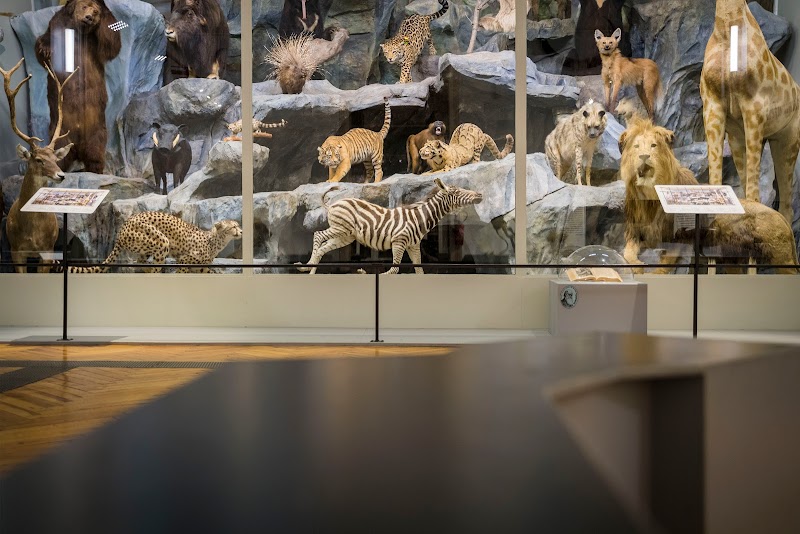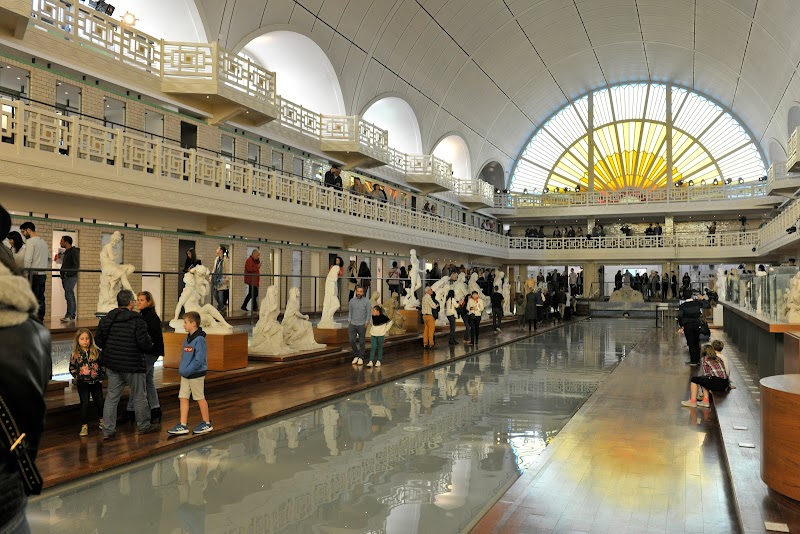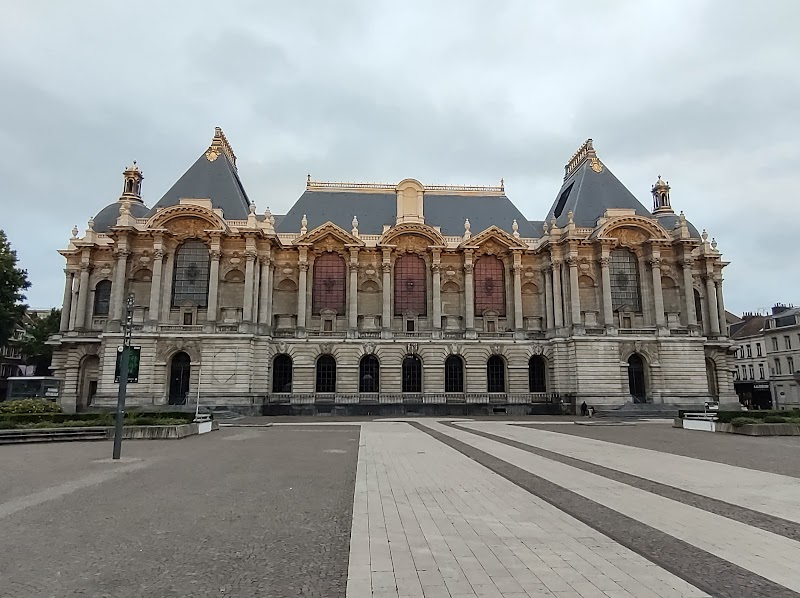Renowned for its vibrant art scene, impressive architecture, and historical landmarks, Lille, the fourth-largest urban area in France and the capital of the Hauts-de-France region, is bursting with youthful energy. Lille, a captivating blend of French and Flemish influences, proffers a wealth of cultural treasures for the discerning traveller.
As you embark on your adventure in Lille, a tourist map could prove to be an invaluable guide. This handy tool simplifies your exploration, assisting you in unearthing Lille's most captivating spots and hidden gems. It's akin to having a local confidante in your pocket, poised to guide you through an unforgettable journey through this lively, charming city.
Booking.comUnveiling the Spectacular Charms of Lille: What to See and Do
Lille, France's fourth-largest urban area, is a treasure chest of experiences waiting to be discovered. With its amalgamation of French and Flemish influences, and an energetic vibe that permeates its art scene and architecture, Lille offers distinctive attractions that bear testimony to its rich historical and cultural heritage. If you're intrigued, check out our upper France tourist map to discover more about the region.
- Palais des Beaux-Arts
- Hospice Comtesse
- Lille Cathedral (Cathédrale Notre-Dame-de-la-Treille)
- LaM (Lille Art Modern Museum)
- Vieux-Lille (Old Town)
- La Piscine Museum
- Lille Citadel
Experiencing the Artistic Heart of Lille: Palais des Beaux-Arts and LaM
The Palais des Beaux-Arts and the LaM, custodians of Lille's artistic heritage, offer a fascinating journey through the corridors of art history. The Palais des Beaux-Arts, one of France's major museums, boasts an impressive collection of European paintings and sculptures. Its unique collection of relief maps of fortified cities, a rare art form from the 17th century, sets it apart. Meanwhile, LaM, the only museum in Europe that combines modern art, contemporary art, and outsider art under one roof, is a must-see on any Toulouse tourist map.
Delving into History: Hospice Comtesse and Lille Cathedral
Experience the historical richness of Lille through two symbolic monuments - the Hospice Comtesse and Lille Cathedral. The Hospice Comtesse, a former hospital dating back to the 13th century, transports you to the old-world charm of Lille with its wooden galleries and a Flemish kitchen. Close by, you can find another gem, the Lille Cathedral. The cathedral is an architectural marvel, boasting a blend of traditional and modern designs - its translucent marble facade is truly spectacular.
Exploring the Old Town: Vieux-Lille
Vieux-Lille, the city’s old town, is a delightful maze of cobbled streets, vibrant facades, and enchanting squares. This charming neighbourhood is home to boutique shops, quaint cafes, and historic buildings, creating a distinctive Lille atmosphere. Exploring Vieux-Lille is akin to stepping into a time capsule, where every turn reveals a new surprise from the past.
Off the Beaten Path: La Piscine Museum and Lille Citadel
For a unique experience off the beaten path, La Piscine Museum and the Lille Citadel offer singular attractions slightly off the usual tourist trail. The former is an ingeniously converted Art Deco swimming pool into an art museum, while the latter is a star-shaped fortress offering verdant spaces and tranquil walking paths. Both attractions exemplify Lille's knack for blending the old and new, creating spaces that are steeped in history yet relevant to the present. For more offbeat attractions, check out our Montpellier tourist map.

Practical Information for Visiting Lille
Transportation and Mobility
Lille provides a diverse range of transportation options for the modern traveller. The city's comprehensive public transport system includes the Lille Metro, two tram lines, and numerous bus services. For those who prefer a more eco-friendly way to navigate the city, Lille's bike-sharing program, V'Lille, offers over 200 stations throughout the city.
For inter-city travel, Lille's strategic location makes it easily accessible from major European cities. The Lille Europe and Lille Flandres train stations provide high-speed connections to Paris, Brussels, and London.
Schedules and Prices
The Lille Metro operates from 5:30am until midnight, seven days a week. A single ticket costs approximately €1.60, while a day pass offering unlimited travel on the metro, tram, and bus networks is priced around €4.50. The V'Lille bike-sharing program operates 24/7, with subscriptions available for €1.50 per day or €5 per week.
Train travel to and from Lille can vary in price, depending on the time of booking and the destination. For example, a high-speed train ticket from Paris to Lille can range from €20 to €60.
Safety Tips
Lille is generally a safe city, but like any urban area, it's wise to stay vigilant, especially at night and in less busy areas. Keep your personal belongings close and avoid flaunting expensive items. It's also recommended to stick to well-lit streets and avoid isolated areas after dark.
Practical Recommendations
When planning your trip, remember that Lille's climate tends to be quite mild, but it can be unpredictable. It's wise to pack layers and a raincoat, no matter what season you're visiting in.
The best times to visit Lille are in the spring (April to June) and fall (September to November), when the city's parks are in full bloom or displaying autumnal colors. However, visiting during the annual Braderie de Lille in September, Europe's largest flea market, requires early booking due to high demand.
Most shops in Lille open from 10am to 7pm from Monday to Saturday. Some smaller boutiques might close for a few hours in the afternoon. On Sundays, many shops are closed, but you can find some open in the touristy areas like Vieux-Lille.
For further information, you can visit the official Lille website.

Frequently Asked Questions About Lille
When planning a trip to the lively city of Lille, some questions may arise that have not been addressed in the previous sections. Here are some clarifications about unique aspects and complex elements of this destination.
What are the dining options in Lille like?
Lille's gastronomy is a delightful fusion of French and Flemish culinary traditions. From hearty stews to delicate pastries, the city offers a wide range of dining options. For a traditional Lille experience, try the local dishes such as 'Potjevleesch' (a jellied meat dish) or 'Carbonnade Flamande' (a beef and beer stew), in one of the many estaminets (traditional Flemish taverns).
Are there any significant events or festivals in Lille?
Lille is known for its vibrant cultural scene and hosts several annual events and festivals. The most significant is the 'Braderie de Lille', a giant flea market held every first weekend of September, attracting millions of visitors from around the world. Other noteworthy events include the Lille Piano(s) Festival in June, and the Lille International Short Film Festival in October.
What opportunities are there for outdoor activities in Lille?
Lille offers several green spaces perfect for outdoor activities. The Citadel Park is a popular spot for jogging, cycling, and picnics. For a unique experience, consider a boat tour along the Deûle River. Those interested in birdwatching will find the nearby Marais de Fretin a paradise.
Is Lille a family-friendly destination?
Yes, Lille is a fantastic city for a family vacation. The city offers several child-friendly attractions like the Lille Zoo, the Natural History Museum, and the Parc de la Citadelle with its large playgrounds. Not to forget, Lille's famous puppet theatre, Le P'tit Jacques, which is sure to delight the little ones.
What language is spoken in Lille? Will I manage with English?
French is the primary language spoken in Lille, but due to its proximity to Belgium and the UK, English and Flemish are also widely understood. Most restaurant and shop staff, as well as younger locals, will likely speak some English.
How accessible is Lille for people with disabilities?
Lille has made significant strides in increasing its accessibility for people with disabilities. Most of the city's top attractions, including the Palais des Beaux-Arts, the LAM, and the Citadel, are wheelchair accessible. The public transportation system, including the metro, buses, and trams, also provides facilities for people with mobility issues.

